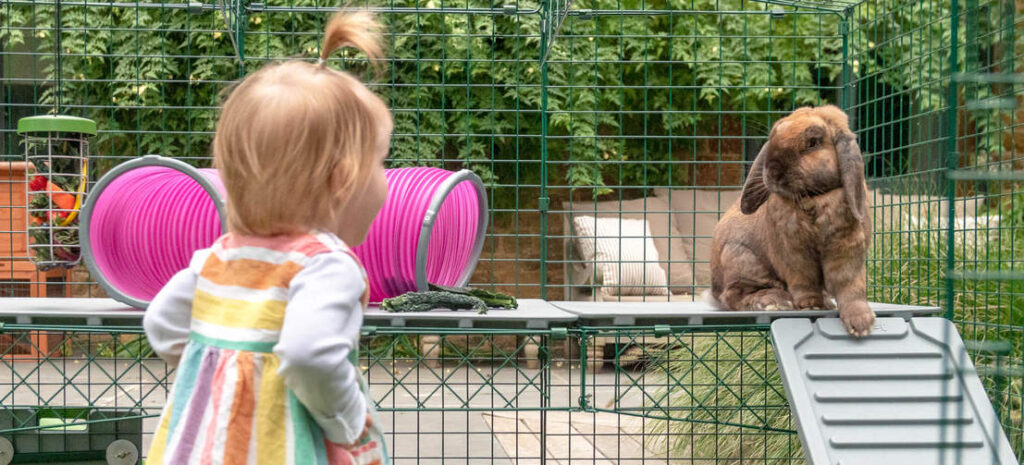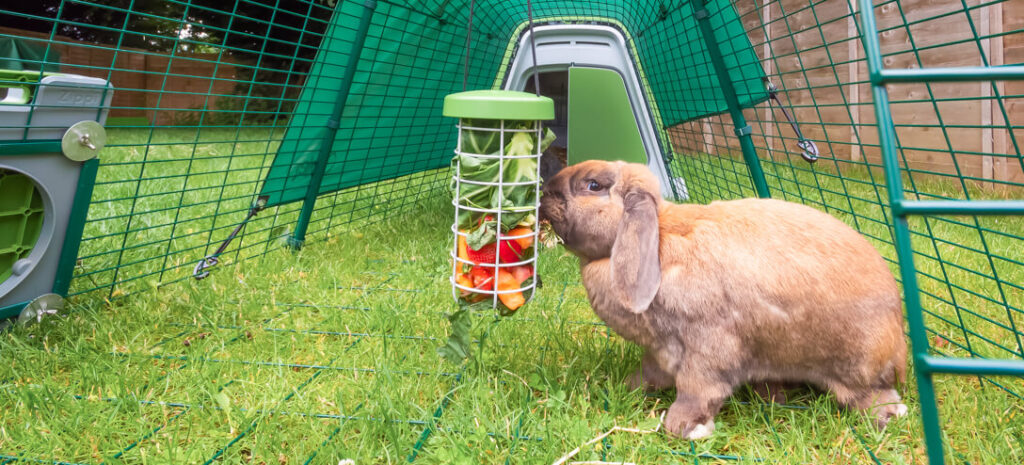How to Tell if Your Rabbit Is Happy
Estimates of the world’s domestic rabbit population vary wildly between 15 million and over 700 million. People have kept rabbits for hundreds of years, and traditionally they were farmed as a plentiful resource – after all, they do breed like rabbits! The larger population estimate includes all the rabbits that are still kept for meat and fur.
With this many rabbit owners around the world, and with the bunny’s rather inscrutable facial expression, it comes as no surprise that the question “is my rabbit happy?” has been asked more than a few times by anxious rabbit keepers.
There are several ways of telling whether your furry friend is content and happy, most of them centering on body language.
Happy bunny body language
Body language is the key way of telling how your rabbit is feeling. Simply by spending time with your bunny, you will learn some of the basic messages that tell you if they are happy and relaxed, or stressed.
These are some of the signs of a rabbit’s mood.
- Twitching nose. Rabbits are constantly twitching their noses. Not only does this help them sniff the air around them, it also eases their breathing, regulates their body temperature and helps them relax. A contented rabbit will do a lot more nose-twitching than a stressed rabbit, so if you notice that your rabbit hasn’t twitched its nose in a while, there may be something distressing it.
- Chilling out. Another easy-to-spot sign of a happy rabbit is an overall relaxed body. Chilled bunnies will lie quietly, ears erect (unless their flop-eared bunnies), sometimes with their legs stretched out, noses twitching contentedly.
- Crouching. Like us, when a rabbit is stressed, its muscles become tense as its fight-or-flight instincts activate and its body floods with adrenaline. If the bunny is in a crouching position, ears flat, pupils dilated, it is anxious, stressed or afraid. The cause could be another pet, a scary noise, or even a whiff of something unfamiliar in the air. This behavior is common in rabbits who have not been hand-tamed from a young age. Alternatively, if your rabbit is chilled out, lounging in the hay and not tensed up in any way, you can be sure that they are content.
- Hopping. When most people picture a rabbit, they imagine a cute creature hopping around. Rabbits have evolved to be great jumpers, with very strong back legs to help propel them at high speeds. Hopping not only acts as a great escape mechanism, it also assists rabbits in their play. Bunnies like to hop around when they are feeling happy and mischievous. Your rabbits may perform the occasional playful leap in their enclosures, jumping in the air, twisting their bodies a little and then landing again, alert and playful. A rabbit showing this type of behavior is very happy with life. A bunny who is gently hopping around and exploring the world around them is also feeling playful and happy.
- Running. A rabbit who darts for cover, usually stamping its back legs on the ground first, is not a happy bunny. Something has startled your poor pet, and the best thing to do is let it recover its composure and confidence in a safe area – usually a quiet corner of the hutch. A quick run to another spot, with ears flat, can also be a sign of anger.
- Curiosity. Rabbits are naturally nervous and will only let their curiosity take the lead when they feel safe. In the wild, rabbits are at the bottom of the food chain, a source of food for many predators. Because of this, rabbits are naturally jumpy (pun intended) and on edge. Domestic rabbits are calmer than their wild relatives but still retain their natural wariness.
Angry bunny body language
These physical clues tell you that your bunny isn’t chilled or afraid – it’s hopping mad!
- Sitting, front legs raised. If your rabbit sits up, front paws raised and flicking in and out as if trying to punch something, it means the bunny is angry – no matter how cute the behavior might look! The ears will be erect (although not in flop-eared bunnies) and facing outwards like radars. The posture may be accompanied by a growling sound.
- Crouching and thumping. If your rabbit is tensed up and thumps its back legs on the ground but doesn’t bolt for cover, it’s angry. The tail will be raised and, in stiff-eared breeds, the ears will be erect. Everything about the bunny will look tensed up, and the pupils will be dilated.
- Crouching with bared teeth. If your bunny is crouched with its front legs stretched in front of it and its head up, teeth bared, it’s angry and ready for a fight. The body will be tense, even quivering, and the mouth will be open, the tail raised, pupils dilated and ears folded back.

How to make rabbits happy
There are various reasons why a pet bunny might be unhappy or stressed. The commonest cause is poor environment. They need sufficient space in their hutch and run, and they don’t want to be harassed by nosy dogs, cats or loud parties. The rabbits will also need the company and stimulation that enables them to fulfill their natural instincts. Remember – rabbits are social animals and love having other bunnies to play with.
Giving your rabbits regular health check-ups and ensuring they are up to date with their vaccinations is also essential. A healthy diet will go a long way towards ensuring a happy bunny. A high-quality pellet mix and a lot of hay form the basis of healthy diets, with fresh veg as treats.
To summarize, if your rabbit is relaxed around you or shows signs of curiosity rather than fear when introduced to something or someone new, they are almost certainly happy and relaxed.
A chilled-out rabbit is a mixture of nature and nurture. They are naturally skittish animals, but if handled by their owners at an early age, they will come to treat you as part of their safe environment, and their happiness will be obvious in the fact that they love spending time with you.
This entry was posted in Pets
